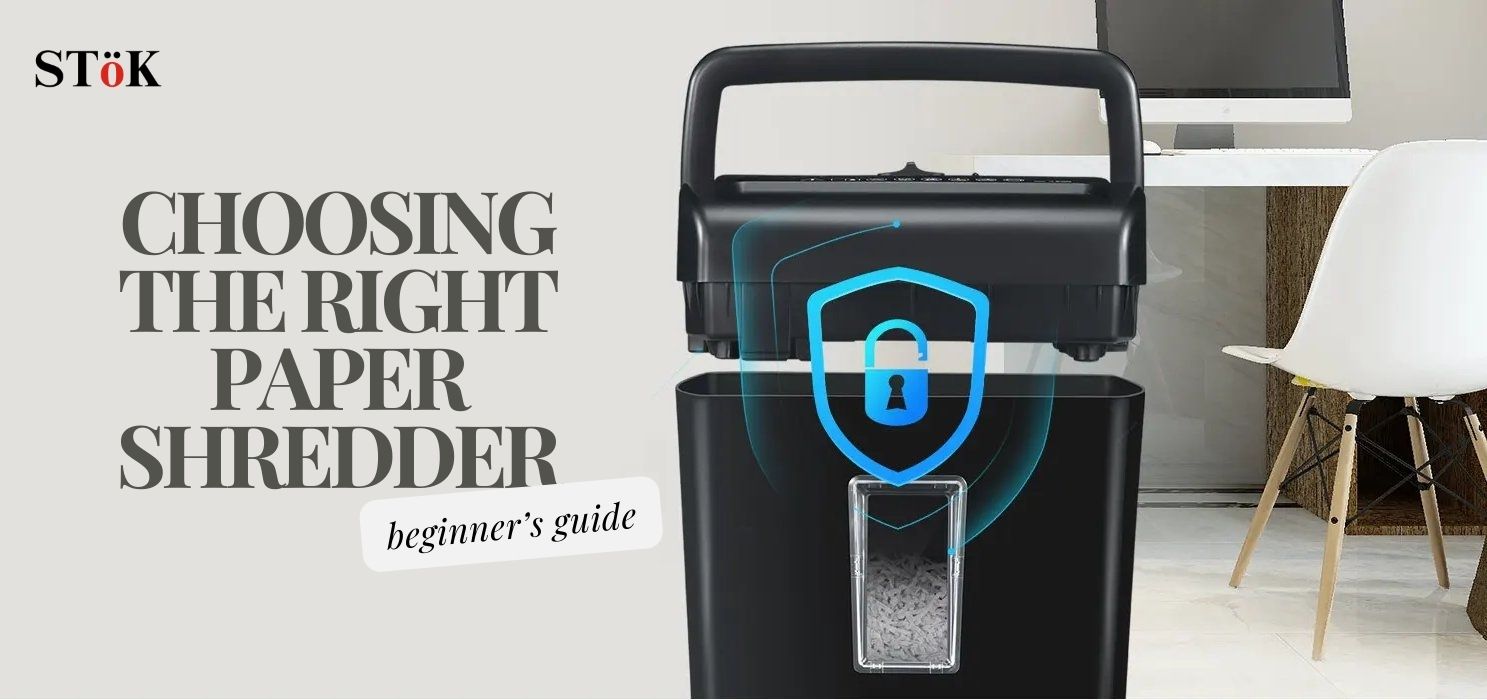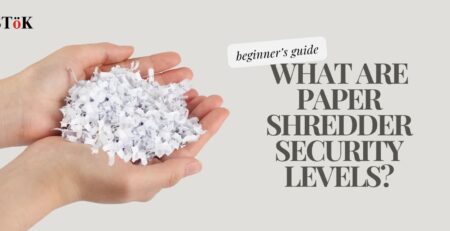Choosing the Right Paper Shredder: A Beginner’s Guide
In today’s digital age, safeguarding sensitive information is paramount. Whether you’re a home user or a business owner, investing in a paper shredder is a crucial step towards protecting your privacy and preventing identity theft. However, with various types and models available, selecting the right one can be overwhelming. Fear not! In this guide, we’ll walk you through choosing a paper shredder that suits your needs in 5 easy steps.
Step 1: Understanding Shredder Types
Before delving into the specifics, let’s unravel the intricacies of shredder terminology. Among the primary shredder types are strip cut, cross cut, and micro cut.
Strip Cut Shredders: The Basic Shredder
Strip cut shredders, also known as ribbon-cut or spaghetti-cut shredders, slice paper into elongated strips. While they provide a basic level of security by rendering documents unreadable, these strips can potentially be reconstructed with sufficient patience and effort. Strip cut shredders typically fall under lower security levels, such as P1 to P3 as per the DIN 66399 standard. These levels indicate that the shredded pieces are relatively larger, making them suitable for basic home use or personal office where moderate security is sufficient. These paper shredders are only recommended for basic usage.
Cross Cut Shredders: Enhanced Security (Recommended)
Cross cut shredders, alternatively referred to as confetti or diamond-cut shredders, offer heightened security by cutting paper both horizontally and vertically, resulting in confetti-like pieces. This renders attempts to reconstruct shredded documents practically impossible, thereby providing superior protection against identity theft and information breaches. Cross cut shredders typically achieve higher security levels, ranging from P3 to P4 according to DIN 66399 standards. Cross cut shredders are ideal for both home and office settings, where a higher level of document security is imperative.
Micro Cut Shredders: Unmatched Security
Micro cut shredders, also called particle-cut or security-cut shredders, offer the highest level of security. They shred paper into tiny, virtually unreadable particles, providing unparalleled protection against data theft and ensuring compliance with stringent security regulations. Micro cut shredders achieve security levels of P5 to P7. And while micro cut shredders represent the pinnacle of document security, they are practically excessive for the majority of users. For majority of home and office applications, a cross cut shredder boasting a security level of P4 is more than adequate, ensuring robust protection against data compromise and adherence to security protocols.
Step 2: Determining Your Security Requirements
Consider the sensitivity of the information you’ll be shredding. For personal use, such as shredding bills, and everyday documents with personal details, a strip cut shredder may suffice, especially if you’re aiming for security levels P1 or P2.
However, for confidential business documents or sensitive financial records, investing in a cross cut shredder is advisable for enhanced security levels of P3 to P4.
Only in the rare case you plan on shredding classified information requiring extraordinary security, it is recommended to upgrade to a micro cut shredder for the ultimate security levels of P5 and beyond.
Step 3: Size Matters – Capacity Considerations
The shredder’s capacity refers to the number of sheets it can shred at once or per pass. For home or personal office use, a shredder with a capacity of upto 6 sheets may be adequate.
Conversely, for office environments where the shredder is often used by more than 2 people or heavy-duty use, opt for models with higher capacities to streamline shredding tasks and minimize time spent. Any paper shredder ranging from a capacity of 8 to 12 sheets is considered adequate in this case.
Keep in mind, it is crucial to not exceed the capacity of your paper shredder during operation. Consistently exceeding the recommended paper capacity can cause overload issues, overheating issues, jam the blades and reduce the overall lifespan of the paper shredder.
Step 4: Factoring in Additional Features
Beyond shredding capabilities, consider additional features that can enhance convenience and efficiency. Look for features such as:
- Automatic Start/Stop: Allows the shredder to begin shredding when paper is inserted and stop when finished, reducing manual effort. The paper shredder can stay in auto mode as a standby mode until paper is inserted, increasing overall efficiency.
- Reverse Function: If the number of paper sheets inserted exceeds the shredder’s capacity it may cause a jam in the motor. The reverse feature helps clear paper jams by reversing the shredder’s motor and allowing for removal of the inserted sheets.
- Overheat Protection: If the paper shredder is excessively used beyond the recommended operation period or with a higher sheet count, it may sutomatically shuts off the shredder to prevent overheating, prolonging its lifespan.
- Bin Capacity: Choose a shredder with a bin size appropriate for your needs, and ensure it’s easy to empty for hassle-free maintenance. Minimum 10L bin capacity is recommended for light/home usage, 15L bin capacity is recommended for moderate/office use and 20L bin capacity is recommended for heavy use.
- Duty Cycle: The duty cycle of a paper shredder refers to the amount of time a shredder can continuously operate before it needs to cool down. This is an important consideration based on your ideal usage.
Step 5: Finalizing Your Shredder Selection
Now that you’re armed with essential knowledge about paper shredders, it’s time to make an informed decision. Consider your security requirements, shredding capacity, desired features, and budgetary constraints to narrow down your options. Whether you opt for a strip cut, cross cut, or micro cut shredder, prioritize quality and security to safeguard your sensitive information effectively. While it’s tempting to opt for the cheapest option, consider the long-term value and security implications.
We hope this blog post was informative. If you need any further information or suggestions in your shopping journey, please feel free to WhatsApp us or send us an email at support@stok.international. We look forward to hearing from you!



Leave a Reply